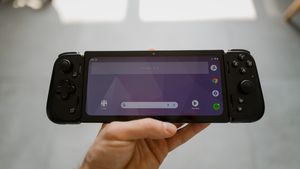The Razer Edge is an Android-based handheld, that lives in between two worlds: streaming, and emulation.
There are three types of handhelds that we have a keen interest in here on overkill.
First, you have so-called x86 handhelds — devices like the Steam Deck, ASUS ROG Ally and the Ayaneo 2s — these are more like gaming laptops in a handheld-like format. Since these are technically computers, they play all the games your gaming PC will play as long as the handheld is powerful enough.
Then we have handhelds primarily meant to emulate older platforms, like the Miyoo Mini or devices by Anbernic. If you want to learn more about devices like these, I recommend you check out some of our friends like Russ from RetroGameCorps or our buddies over at RetroResolve.
Finally, there is a relatively new category of handheld devices, represented by something like the Logitech G Cloud and Razer Edge. These are streaming-based devices — you don't install games on them but rather stream them through the cloud with a service like Xbox GamePass, Amazon Luna, or Nvidia GeForce Now. Or you stream games locally from your PS5 with Remote Play or with Steam Link from your PC.
Today, we'll focus on one such device from this streaming category, in this review of the Razer Edge.
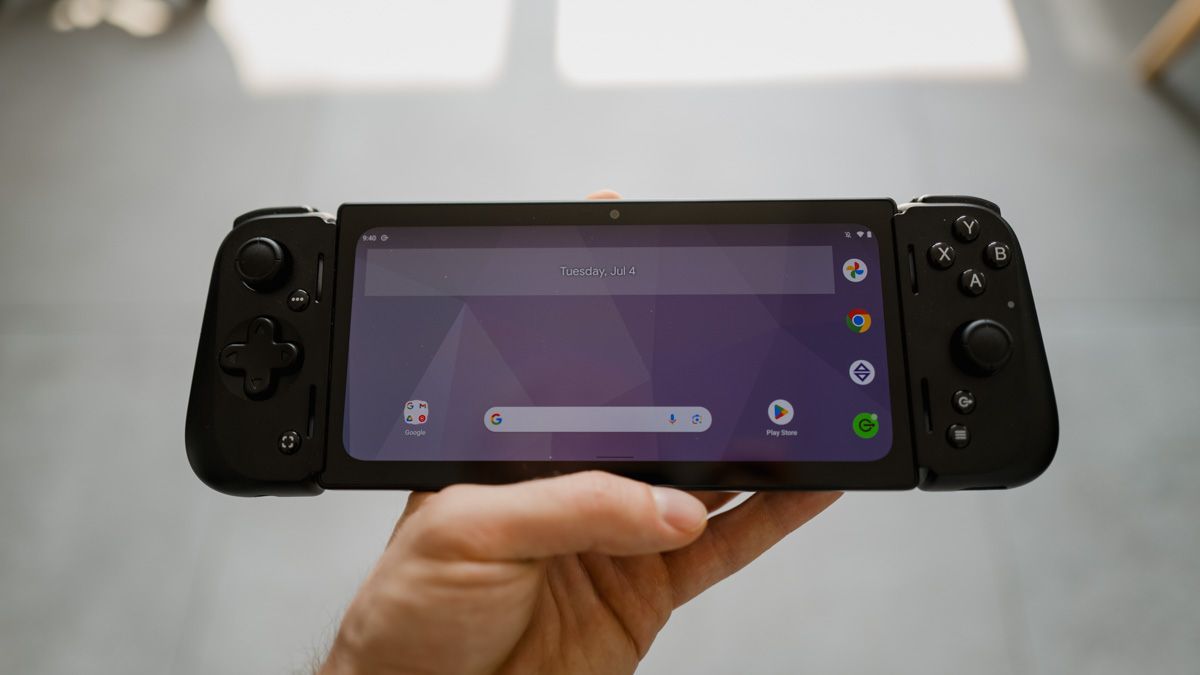
Razer Edge
Probably the best Android handheld on the market right now, but it comes with a weird screen and a steep price.
The Razer Edge is an Android-based gaming handheld — kind of. In actuality, it is two products: The Razer Kishi v2 Pro controller and an Android tablet in one.
The Kishi v2 Pro controller is nearly identical to the Kishi v2. The Pro-part is the additional headphone jack at the bottom, and the haptic feedback engine, to make the device rumble in certain situations.
It's a great controller. It technically works with all your USB-C devices, but as I am an iPhone user, I, unfortunately, don't have another USB-C device to hand. But I have a Backbone One controller, and while both are similar, I like the buttons of the Kishi a tad more.
When the tablet is connected to the Kishi controller, you realize it is not the same experience as a device with the controllers attached to it. But this doesn't mean that it makes for a much worse experience: There is close to no wobble, and while it is not as ergonomic as, say, a Steam Deck, I rest my fingers a little differently than on the Deck and thanks to the textured grips, it's still completely fine.
I recorded an audio file to compare what the ABXY buttons sound like compared to the sound of the buttons on my Razer gaming mouse. The takeaway: I firmly believe the switches in the Kishi v2 Pro are simply mouse button switches.

And while I suck at fighting games, the D-pad in the Kishi v2 Pro controller is another satisfying button to click, which makes for a fantastic fidget toy.
But while this controller is great, it isn't perfect. There are two things I don't like. While I don't have huge hands, I find the left and right shoulder triggers too small. They are easy to reach and feel fine to press, but I wish they were a tad bigger. Also, the analogue sticks used are not my preferred ones. I am playing many games on the Ayaneo 2s for an upcoming review, and the Ayaneo uses hall-sensing sticks. The Kishi uses your typical Nintendo Switch-like sticks used in many products right now. If you don't compare these to hall-sensing ones, they are perfectly fine, but I am unfortunately now used to using hall-sensing sticks, so I wish this had these.
But besides that, this is a damn fine controller. And while the Pro-version is not for sale, you can get the non-pro version for your smartphone — and yes, there is an iPhone version — right now for $99.
Now onto the brains of the device.
Despite its size, the Razer Edge is officially an Android tablet. This is important because, in the Play Store, it is recognized as an Android tablet. If an Android app doesn't work on tablets, you won't be able to install it through the Play Store and have to sideload it. So far, I've only run into a few situations where this was the case, mostly when I was looking for alternative launchers, but keep that in mind.

But since it's an Android device, you can do all the things you can do on an Android tablet. Install TikTok, use it as your browser, send emails, and talk to your friends through Discord. It all works.
The Razer Edge has a gorgeous screen. It's a 6'8" AMOLED 144hz Full HD screen. It is miles better than what is found in the Steam Deck or the OG-Switch. The OLED part alone of this screen is a beauty to look at.
Compare these shots below of Dead Cells on the non-OLED Switch, the Ayaneo 2s, the Steam Deck, the ROG Ally and the Razer Edge, and you'll quickly see the colours pop so much more on the Razer Edge.
Thanks to that screen, even games you stream through your in-house WiFi from your PC to the Razer Edge look better on this than they do on the Steam Deck. The colours are more vivid, the blacks are much deeper, and it has more than double the refresh rate of the Steam Deck. So as long as your host device can push it, the games look fantastic.
Then again, they run natively on Steam Deck, installed on the device.
BUT. And that's a big but (pun intended). Razer made two choices with the screen that I cannot comprehend. Look at this picture of the screen:

See these rounded bezels right there? I don't know why the corner radius is as it is. It is just too round. Android itself often struggles with this. In the picture, you can see Daijinsho, a fantastic emulator frontend. Unfortunately, the corners of the interface are cut off because nothing in the software knows how to handle these. This happens in a lot of places.
Also, the aspect ratio of this handheld is 21:9. That is a perfectly normal aspect ratio for a smartphone — the Samsung Galaxy S22 Ultra has an aspect ratio of 20:9 — but for a handheld, it is a weird design choice. For example, both the Steam Deck and the Ayaneo 2s have an aspect ratio of 16:10. The Switch has an aspect ratio of 16:9. So does the Ally.
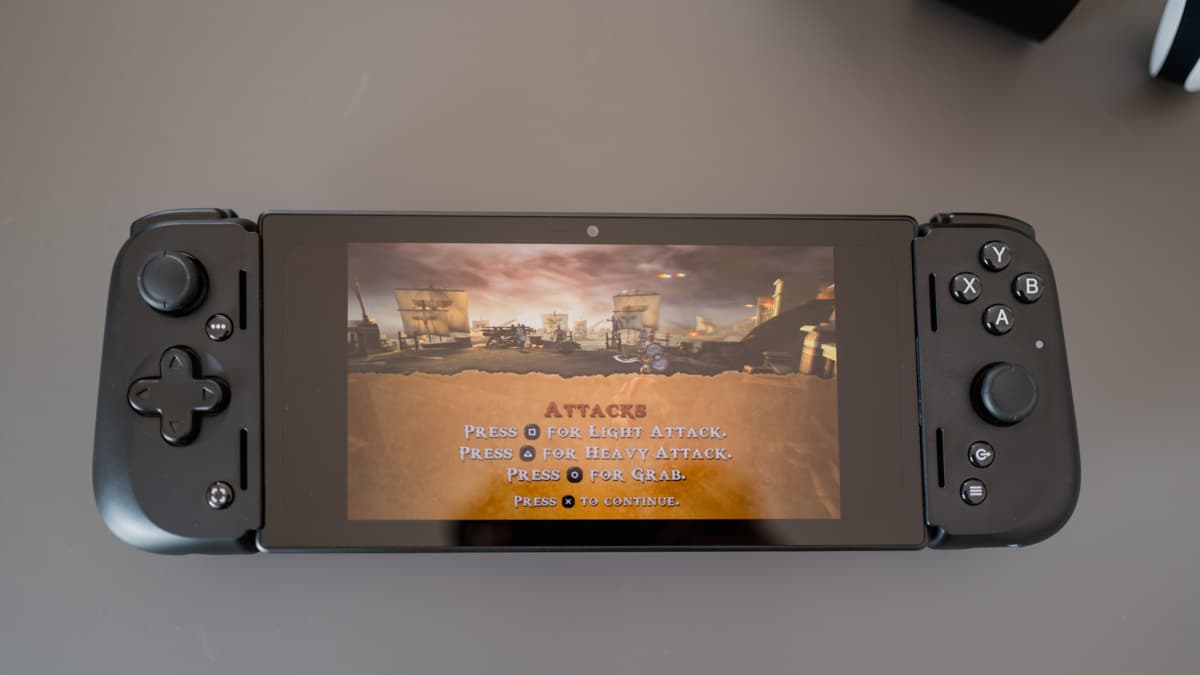
If you play games on the Razer Edge through streaming, like GamePass Cloud Streaming, you'll see the game has black bars on each side. This is due to that aspect ratio. It's an OLED screen, so the black bars are perfect blacks but still very visible. The industry trend goes to the least amount of bezel possible, and here is Razer artificially creating them.
Now, the only situation where this is less pronounced is for emulated games that natively run at a 4:3 ratio. So, funnily enough, this is a great device to play Game Boy Advance games. But that is a super… edge-case (pun intended), so it is a weird choice in every other situation.
Talking of emulation: The Razer Edge is an absolute beast of an Android tablet power-wise, thanks to its Snapdragon G3x processor. It has 6GB of RAM in the WiFi and 8GB in the 5G version, 128 GB internal memory with a microSD slot, and that aforementioned 144hz AMOLED screen at a 1080p resolution.
It is way too powerful for what is marketed as a streaming first device. I frankly can't imagine that the Edge has all this power to play some Android games like Genshin Impact.
So coming back to my initial three categories for handheld devices, I feel that this handheld is much more at home in the emulation category despite what it's officially marketed as. It can easily emulate everything that Android can emulate.
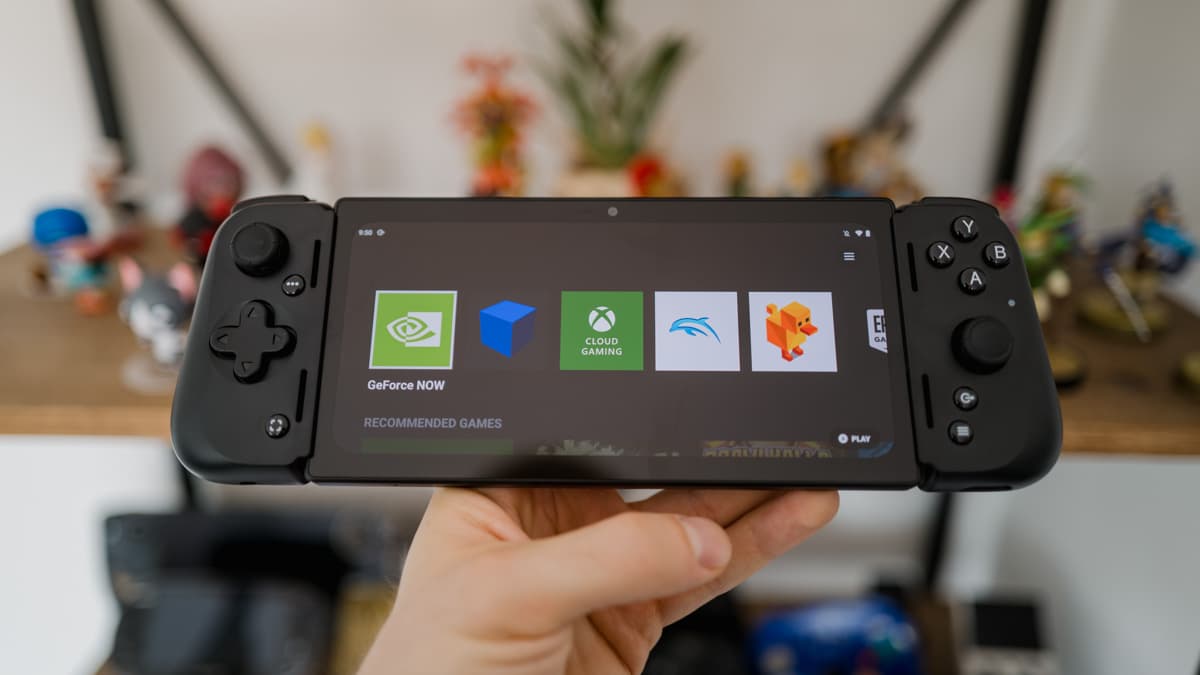
Be it GameCube, PSP at 3x the native resolution, PS Vita, PlayStation 2, or even that one current console from Nintendo that I won't mention or else I will have Nintendo's Ninjas on my back. (It's the Switch!)
This thing does it all. If it exists on Android, the Razer Edge can run it. (I wish it would also emulate Wii U games, but that is an Android problem, not a Razer Edge Problem. Cemu doesn't exist for Android, but Cemu is currently my favourite emulator).
However, the recent introduction of Yuzu made clear where the Razer Edge falls short in emulation: it doesn't have enough RAM. Yuzu needs at least 8GB, preferably more, but on the Razer Edge Wi-Fi edition, you only get 6. You can get 8 GB of memory if you buy the 5G edition, but that is only available in the US via Verizon currently.
But despite all the greatness — except for the few flaws I mentioned — one big elephant in the room makes this hard to recommend: the price.
The Razer Edge Wi-Fi version costs $399.
It is a reasonable price for an Android tablet as powerful as this. The cheapest iPad costs $329 and is less potent than the Razer Edge. But in a world where the entry-level Steam Deck also costs $399, the price is much harder to swallow. This doesn't mean the Razer Edge is too expensive; it's that the Steam Deck if anything is priced really competitively, or "too cheap". It is clear that Valve loses money with every 64GB Steam Deck they sell, but that is money they can get back through their 30% cut they get on games sold through Steam. Razer cannot compete on this level, despite being the more experienced hardware manufacturer.
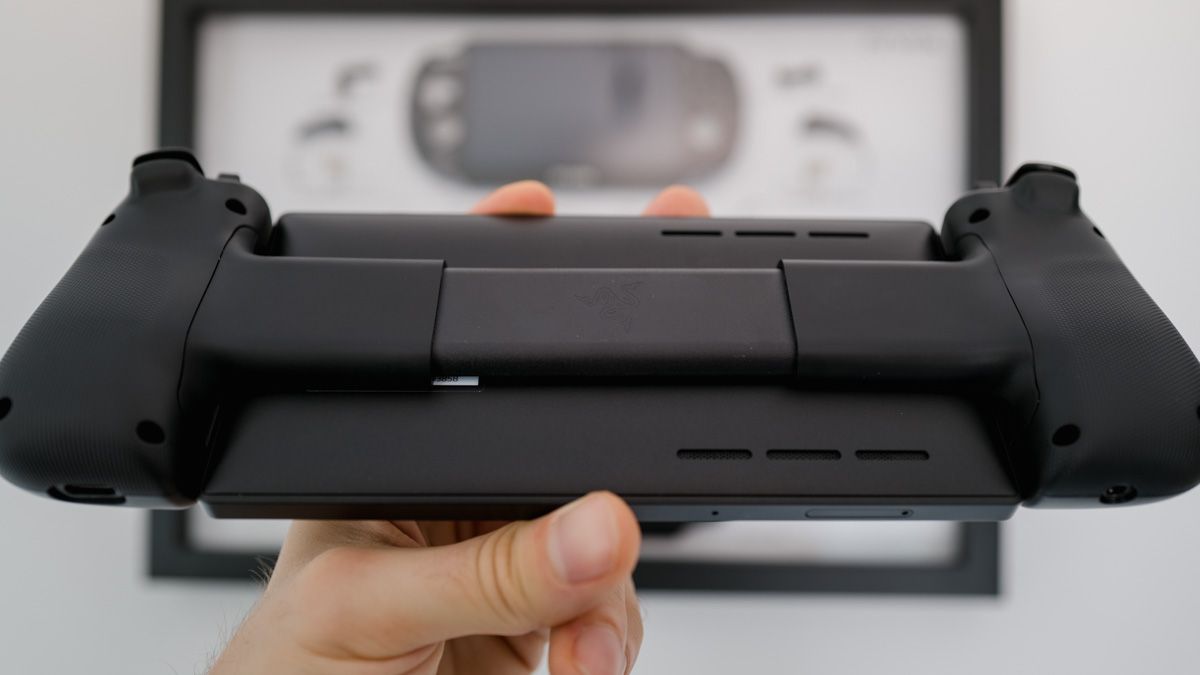
So the question is: Who is this for?
I think the Razer Edge is for a specific group of gamers that might mostly play on a console like the PS5 and want a way to play their games "more or less" on the go through Remote Play. They might even want to dabble with Game Pass and emulate some of their old favourite platforms but are not PC gamers and do not care for PC gaming — which eliminates the Steam Deck or the ROG Ally. So for this type of gamer, this device is perfect, especially if you're already comfortable in the Android ecosystem.
It's not the cheapest, but it's a damn good device with a near-perfect screen. I wish these bezels were not the way they are though.
Oh, and this is also for Android-first gamers, though I am not sure that is even a thing...


